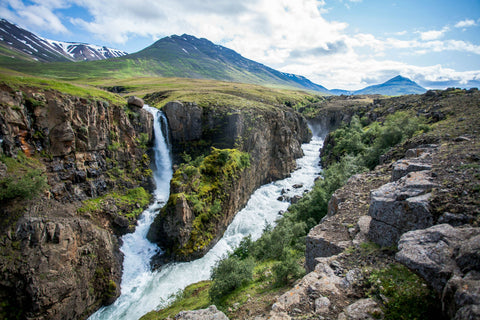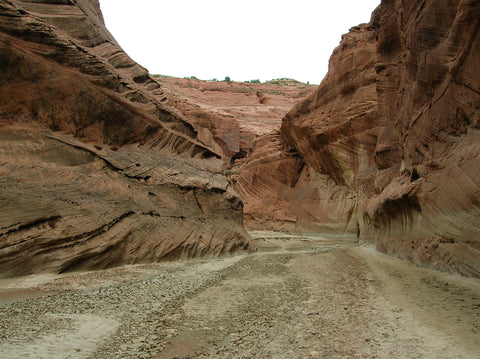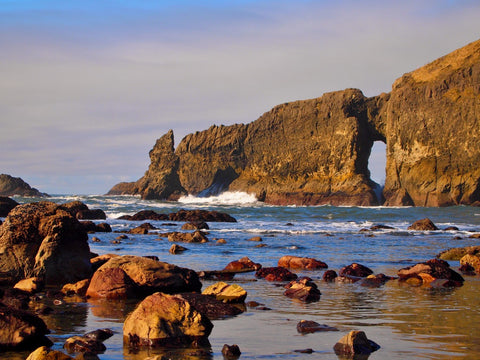Best Spots To Go Gold Panning
There are many places to go gold panning, from up in the mountain’s at a river or stream or small creek to the ocean. You can even find gold at the ocean and even in the desert. Find where and how to look for gold in the following areas:
- Prospecting Rivers, Creeks, & Streams
When prospecting in a river, you will want to look for both fast and slow-moving water. The bends in the river where the gold can get trapped. Gold is found where water flow is altered by obstacles such as boulders and logs or by watercourse contours, such as bends in river.
Gold can also be found where two rivers or streams come together. It is what’s called a "confluence zone." Gold will tend to build up as a pay streak in these areas. Water is slowed down by sand bars so gold tends to drop out and build up there. You want to look for signs of gold like black sands, pyrite and small quartz, as these are all usually good indicators of gold being in the area. Garnets may also be present, often appearing in many shades of colors including red, orange and pink!
Remember, don't forget to check public land records in the proper BLM State Office that will show you which locations you can prospect for gold.

Example of a "Confluence Zone," where two rivers meet at a center.
- Desert Prospecting
All areas that look as though a slowing down of water current occurred are worthy of closer examination for finding gold. Since gold is heavier than most other materials, it tends to settle and sink to bedrock. Depressions may hold rich pockets of gold, while bedrock that is fissured and shattered, acting as riffles, also holds potential for finding that shiny stuff. Be on the lookout for old stream beds or river beds, and look for areas where the water would have been altered in some way. Any gold that may exist there would have likely settled in desert washes and alluvial areas.

Dried up riverbeds are potential locations for finding gold in the desert.
You may be asking how gold ended up all the way in a desert. Well, gold can very easily travel a long way from its water source, often transplanted there from decades of runoff, flash floods and even rare rain storms. Gold settles out and concentrates in what we call dry washes the same way as it does in and along creeks, streams and rivers! You can even use the Gold Rush Nugget Bucket to pan for gold in the desert as long as you use a source of running water! Just scoop in a lot of sand instead of dirt, but water is essential to clean the system. You can even reuse the water if you put a larger bowl underneath the bucket to collect any water that falls out.
- Beach Prospecting
I myself have never beach prospected before, but I heard it can be lots of fun! From what I have learned, most gold panning is done on the coastal beaches. In Washington, a popular place to go gold panning would be on the Olympic Peninsula. You want to look for where streams and rivers drain onto the beach and for the appearance of some black sand in the same area.

The beaches at Olympic National Park in Washington are a great place to search for gold and explore.
If you do gather some black sand and put in your Gold Rush Nugget Bucket, pour some dirt and water in there and see if you come up with anything. I have been told by many prospectors that work beaches that the gold on beaches is found about four feet down below the surface. If you're looking for surface gold, I’ve been told to look for a bluish-gray layer of sand, and that's where you can best find a potential paystreak of gold!
Also don't forget the best tool to take with you gold panning is the Gold Rush Nugget Bucket!


Comments
21 Comments